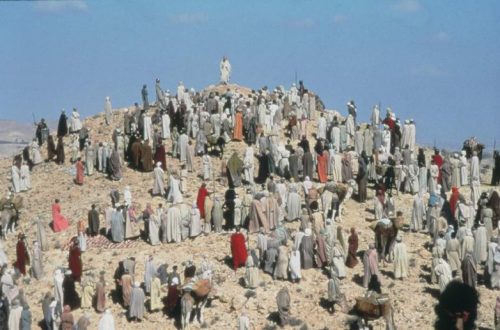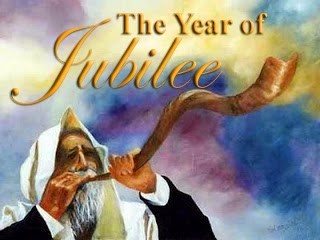Ezekiel, a visionary prophet
Title:Ezekiel, a visionary prophet
Aim:To comprehend that God’s holy presence and infinite power encourage us to heed His Word.
Scripture:Ezekiel 1:1–28
Ezekiel, the prophet, Ezekiel 1:1–3
Ezekiel name means “God strengthens.” He was the son of Buzi, a priest of the family of Zadok (Ezek 1:3).
What is known about Ezekiel’s life comes from the information he gives in his book. Also, his prophecies contain dates more specific than almost any others in the Old Testament. This makes it possible to correlate Ezekiel’s declarations with Babylonian records and date many of the prophet’s oracles (e.g. 1:1–3; 8:1; 20:1; 24:1; 26:1; 29:1, 17; 30:20; 31:1; 32:1, 17; 33:21; 40:1).
In 597 B.C., when Ezekiel was about 25 years old, the Babylonians took him into exile with Jehoiachin and about 10,000 other Jews (2 Kings 24:10–17). Then, when Ezekiel was 30 years old and living in the Jewish colony of Tel Aviv on the Kebar River (near the ancient city of Nippur), he heard God’s call to be His prophet (Ezek 1:2–3; 3:15; about 593 B.C.).
Apparently, Ezekiel was a person of some stature among the leaders of his people, for the prophet’s home became a central meeting place (3:24; 8:1; 14:1; 20:1). Also, Ezekiel was married. Yet, 10 years into the exile, his wife died suddenly, perhaps due to the onset of a sudden illness (24:15-18). Evidently, the couple were childless.
Throughout Ezekiel’s ministry, which continued until 571 B.C. (29:17), he tried to help his fellow exiles deal with the fact that they were far from their homeland. He taught them that the Lord was ever present to sustain them during their time of displacement and anguish.
Ezekiel’s oracles, like those of Jeremiah, fall into three major categories: (1) declarations against Israel, especially before the fall of Jerusalem in 586 B.C.; (2) pronouncements against the nations, such as Egypt and Tyre; and, (3) words of consolation for Israel’s future, including visions of a restored nation and a new temple (chaps. 33–47).
Like Jeremiah, Ezekiel is known for his symbolic acts to convey God’s message, such as shaving his head and burning some of his hair to show God’s destruction of Jerusalem (chap. 5). Also, like Jeremiah, the Lord used Ezekiel to urge the exiles to heed the stipulations of the Mosaic covenant and seek after God.
Through Ezekiel’s teaching, he stressed the holiness and transcendence of God, His grace and mercy toward the righteous remnant, His sovereignty, and individual responsibility for sins committed. Ezekiel revealed that God pledged to preserve a remnant of His people through whom He would fulfill His promises.
Ezekiel’s vision of the four living creatures, Ezekiel 1:4–21
Ezekiel 1 records the prophet’s vision of a celestial chariot on which the Lord rode as the majestic, transcendent, and divine Warrior. The imagery used in the chapter to describe this cosmic experience (technically referred to as a theophany) is graphic, surreal, and captivating.
The opening chapter parallels other ancient Israelite descriptions of God’s throne room (for instance, Exod 24:9–11; Isa 6:1–4). Ezekiel 1 also draws upon figurative language used throughout the Fertile Crescent. Even so, the prophet’s kaleidoscope of images moves in distinctively unique directions.
For instance, the Creator’s otherworldly presence is depicted as being enthroned on an ice-blue platform. In turn, four cherubim transport His triumphal carriage in whatever direction He desires.
The astonishing experience occurred in 593 B.C. by the Kebar River (vv. 1–3). An intense thunderstorm forms the backdrop for the episode and is described in a vivid, foreboding manner (v. 4).
It would be incorrect to conclude from the above observations that the Creator is merely a Mesopotamian lightning-and-rain deity. Instead, when the Lord unveils His fearsome presence, the righteous remnant understands that He alone is the infinitely holy, eternal, and all-powerful God of Israel. Every aspect of heaven and earth fall under His sovereign rule.
The preceding truths were made clear to Ezekiel when he noticed a fierce, ominous storm blowing in from the north (the locale from which the enemies of God’s people often originated, including the Assyrians and Babylonians). The prophet recognized this phenomenon as a harbinger of the Creator manifesting His awe-inspiring glory (Ps 18:12; Nah 1:3; Hab 3:3–6).
We can imagine Ezekiel witnessing gale-force winds, along with a deluge of rain and hail. From an enormous cloud came thunderbolt flashes. The cloud’s edge radiated with dazzling brightness, and its fiery center resembled glowing, molten metal.
Ezekiel saw emerging from the cloud’s center four living beings who were part-human and part-animal (Ezek 1:5). They were cherubim (10:15, 20).
These creatures are first mentioned in Exodus 25:18–22 in connection with the wilderness tabernacle, and later described in 1 Kings 6:23–28 and 2 Chronicles 3:10–13 in connection with the Jerusalem temple. The celestial entities stood as protectors of the Creator’s sacred presence.
Each cherub had four faces and four wings (Ezek 1:6), enabling them to see and move effortlessly in all directions throughout the globe. The composite or hybrid creatures also had a human face in front, a lion’s face on the right side, an ox’s face on the left side, and an eagle’s face in back (v. 10).
These angelic entities portrayed various aspects of the divine majesty. For instance, the human face symbolized wisdom. The face of a lion denoted mobility and dignity. The face of an ox represented strength and faithfulness. The face of an eagle symbolized speed and control (Ezek 10:14, 22; Rev 4:7).
All over the bodies of the cherubim—including their backs, hands, and wings—were eyes (Ezek 10:13). This was suggestive of the Creator’s probing, discerning, and all-seeing nature (Zech 3:9; 4:10; Rev 4:6).
Though the legs of the angelic beings were straight like those of humans, the soles of their feet resembled the hooves of agile calves and gleamed like polished bronze (Ezek 1:7; also, Ps 29:6; Mal 4:2). The prophet saw human hands under each of their four wings (Ezek 1:8; also, 10:8, 21).
These creatures spread out two of their wings, so that when their wing tips touched, it formed a square. This arrangement enabled the cherubim to move straight ahead in any direction without turning their bodies (1:9).
With their remaining two wings, the heavenly beings covered their bodies, perhaps inreverence and awe before the Lord(vv. 11, 23). Regardless of the direction in which the “Spirit” (v. 12) chose to go, that is where the cherubim traveled.
In the middle of the celestial entities, Ezekiel saw what appeared to be bright coals of fire or blazing torches (v. 13; also, Gen 15:17; Ps 18:8). Moreover, the prophet noticed lightning streak back and forth among the creatures. Also, they darted from one place to the next with the speed of lightning (Ezek 1:14).
Four wheels could be seen touching the ground beside each of the cherubim (v. 15). These wheels, which symbolized mobility (Ezek 10; Dan 7:9), were the same in appearance and construction (called the “whirling wheels” in Ezek 10:13).
Each wheel gleamed like “topaz” (1:16; also 10:9), which is a yellow or pale blue precious stone (Exod 28:20). Each object looked like a wheel at right angles to another wheel (perhaps comparable to a gyroscope), and so appeared to be spherical in structure (Ezek 10:10).
The preceding shape enabled the globe-like wheels to move in any direction without turning. This remained the case regardless of where the cherubim traveled.
The rims of the four wheels were immense in height, frightening, and covered with eyes all the way around (v. 18; also, 10:12). The rims possibly symbolized the omniscience of God (Pss 92:5; 147:5; Isa 40:28; Rom 11:33).
Because the spirit of the angelic beings was in their respective wheels, the creatures totally controlled the wheels. Consequently, the wheels stopped and moved wherever the living creatures traveled, regardless of whether the Spirit directed them to move horizontally or vertically (Ezek 1:19–21; also, 10:11, 16–17).
Ezekiel’s vision of the Divine Warrior, Ezekiel 1:22–28
Spread out above the cherubim was a stunning, ice-blue platform that glistened like crystal. This dome-shaped “vault” (Ezek 1:22) or “expanse” separated the angelic beings from the glory of the Lord in His heavenly temple (Gen 1:6–8; Ps 19:1).
Whenever the living creatures flew, their two raised wings sounded like waves crashing against the shore, the maelstrom of a powerful army launching an attack, or the utterance of the omnipotent Creator (Ezek 1:24; also, 10:5). Then, when the cherubim stopped, they folded their wings against their bodies.
At that moment, Ezekiel heard a voice originating from the platform beyond the angelic beings (1:25). The prophet also saw above the “vault” (v. 26) or “expanse” a blue, sapphire-shaped royal seat (10:1).
On the cosmic, throne chariot was a figure who resembled a human being (1:26). The Creator used the cherubim to effortlessly convey His ineffable, majestic presence in any direction, regardless of whether it east or west, as well as north or south.
The above remarkable depiction sets the scene for the advent of the divine Warrior. Yet, it does so in a manner that uses impressionistic language to avoid any idolatrous depictions of the infinite, eternal Creator.
In Ezekiel’s vision, the torso and head of the figure he saw had the appearance of glowing, yellow amber in the middle of a fire. Also, from the waist down, the Lord looked like a burning flame, while all around Him was a “brilliant light” (v. 27).
God’s dazzling “radiance” (v. 28) was as bright-hued as a rainbow that appears after a storm (Gen 9:12–16). When Ezekiel realized he was gazing on the “glory” (Ezek 1:28), or majestic splendor, of the Creator, the prophet fell face down on the ground in fear, submission, and woship.
In this depiction, there is an immense chasm—as well as limitless distinction—between the divine and humankind. There was no comparison between fallible, finite creatures and the Monarch of the universe. For the rest of Ezekiel’s life, after his momentous commission to be God’s prophet, he would carry the memory of this surreal encounter with God.
For thought and application
In Ezekiel’s vision, the Creator’s throne room is in heaven and He is far removed from human beings. Yet, even then, the Lord of the cosmos pledges to be with His people. He is always near to lead, comfort, and watch over them.
The loving character of God can bring about radical change in our lives. For instance, His holiness makes us aware of our sins. His mercy encourages our confession and faith. His promises give us hope in hard times. And His commands motivate our obedience.
We cannot look to the future based on human plans and expectations. After all, the best of our plans can never be guaranteed. And ultimately our plans for the “good life” are dashed on the jagged rocks of reality—such as illness, disappointments, financial reverses, and so on.
In Bible times, the hope for the remnant of God’s people in exile depended totally on the Lord’s promises and His character. This also holds true for us. Because we have God’s Word, we know what He expects us to do. And just as He desired faith, obedience, and work from His people in the days of Ezekiel, so God wants the same from us today.
We have more reasons to believe and obey the Lord, for we know the risen, glorified Messiah, as well as the abiding power of the Holy Spirit. So, we have no valid reasons to refuse to walk by faith and to work to extend God’s love and grace in our homes, communities, and throughout the world.




